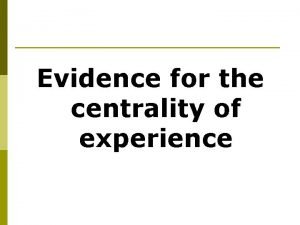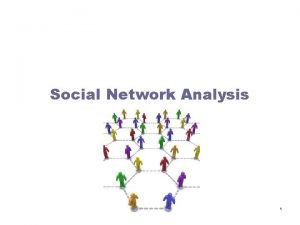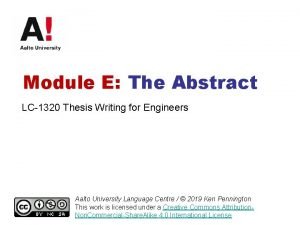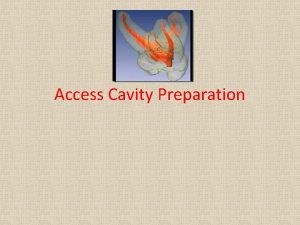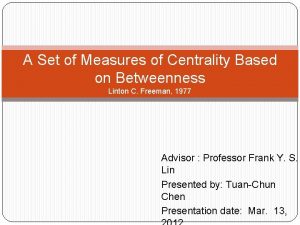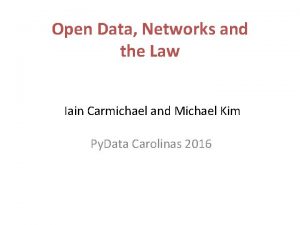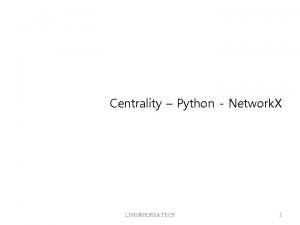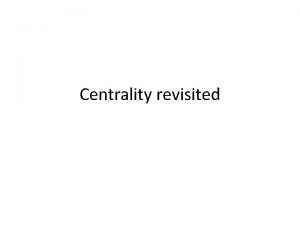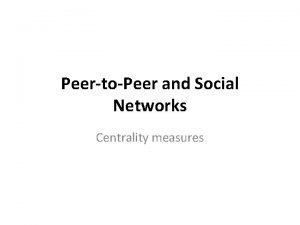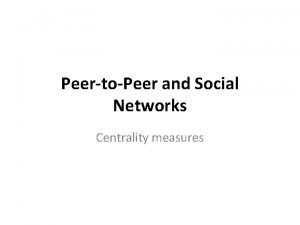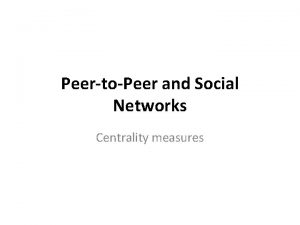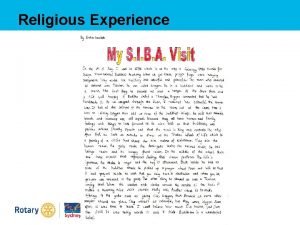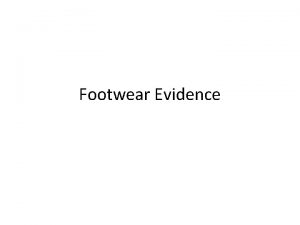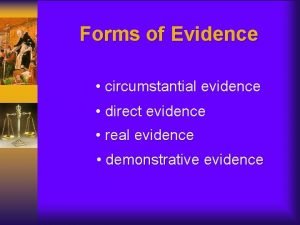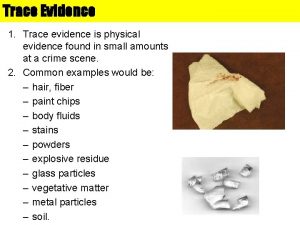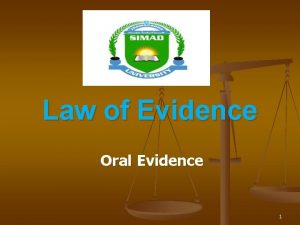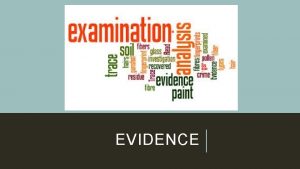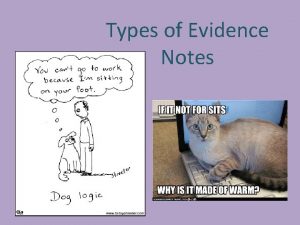Evidence for the centrality of experience Evidence for


























- Slides: 26

Evidence for the centrality of experience

Evidence for the centrality of experience Psycholinguistic Studies of Entrenchment Catherine L. Harris (1997) p Constrains on Statistical learning Jenny R. Saffran (2002) p

Outline of Lecture The big picture p Idiom-level representation p Collocation level representation p Statistical learning p Conclusions p

The big picture • Psycholinguistics • Computation

Evidence for the Centrality of Experience Entrenchment p Statistics p Performance p

Entrenched expressions Words (Carr 1986) p Common word combinations (collocations) p Multi word idioms p

Does “Idiom Level” of Representation exist ? (Harris 1997) Priming p Semantic priming p n n Spreading activation Semantic integration Great minds think alike Great minds alike p Minds think alike p

Idiom level p Great minds think alike 42 - 4 words idiom n n Contiguous with target Noncontiguous with target p p p 30 – first two words best eliciting 12 – middle two words best eliciting. Associative and Semantic trios n n n baby, cradle -> bottle ear, foot -> mouth doctor, nurse -> surgeon -semantic -associative -both

Results p Degree of priming n n p Semantic – 57 Associated – 42 Both - 65 Idioms – 44 No difference between the groups

Results Prime was: Best elicited idioms

Conclusions so Far… Idiom Level of Representation exist p Syntactic schema p

Does Collocation Level of Representation exist ? (Harris 1997) p Is priming good enough? n p Processing letters n p Cradle -> baby Word Superior Effect -Carr(1986) Random word pairs vs. collocation

Collocation X G TAX BILL

Collocation Single Collocation Nonword neighbor collocation letters Tax bill Tax bell Tax deep XG Night club Night clue Night wall NE world Free world Tree world Open world R U

Collocation p p p Letter detection was better in the collocation than in other stimuli. “sophisticated guessing” Collocation “friends” n p Bog down/bow down Superiority of detection of words in collocation remains

Collocation p p Are collocations activated in response to partial input? Trick items n n p Tag bill Eight club Accuracy impaired n n 65% trick condition 90% collocation condition

Conclusions so Far… Idiom Level of Representation exist p Syntactic schema p Collocation level representation exist p n n n Polysemous words interpretation Child language acquisition Computation

Constraints on Statistical Learning (Safran 2002) Predictive dependencies affect learnability of sequential structures p Domains p

Constraints on Statistical Learning (Safran 2002) Combinatorial explosion p Source of the constraints p Linear input to Nonlinear structure p n n (the professor (graded (the exam)) Innate knowledge Dependency relations between categories

Word categories

Language P vs. Language N

Rules for both languages

Results Sequential/ Stimuli simultaneously Linguistic? result Sequential Auditory Yes/no P>n>½ Sequential Visually Yes/no P=n>½ simultaneously Visually Yes/no P>n>½

Results Adults p > n p Children p>n p Other domains p

Conclusions Language evolved to fit the human learner p Similarities among human languages may reflect constrains to fit human learner p Bridge between nature and nurture p

Summary p Entrenchment n n n p Statistics n n p Representation of idioms Representation of collocations Representation of words Between word categories Phonemes Letters Performance n n Acquiring predictable language using idioms or collocations
 Pidiom
Pidiom Normalized degree centrality example
Normalized degree centrality example Lc1320
Lc1320 Maxillary canine access opening
Maxillary canine access opening A set of measures of centrality based on betweenness
A set of measures of centrality based on betweenness Katz centrality
Katz centrality Closeness centrality
Closeness centrality Degree centrality networkx
Degree centrality networkx Degree centrality python
Degree centrality python Page rank centrality
Page rank centrality Ap human geography unit 3 vocab
Ap human geography unit 3 vocab Indirect experience
Indirect experience Imprint definition psychology
Imprint definition psychology Early experience vs later experience
Early experience vs later experience Vẽ hình chiếu đứng bằng cạnh của vật thể
Vẽ hình chiếu đứng bằng cạnh của vật thể độ dài liên kết
độ dài liên kết Quá trình desamine hóa có thể tạo ra
Quá trình desamine hóa có thể tạo ra Môn thể thao bắt đầu bằng chữ f
Môn thể thao bắt đầu bằng chữ f Sự nuôi và dạy con của hổ
Sự nuôi và dạy con của hổ điện thế nghỉ
điện thế nghỉ Các loại đột biến cấu trúc nhiễm sắc thể
Các loại đột biến cấu trúc nhiễm sắc thể Nguyên nhân của sự mỏi cơ sinh 8
Nguyên nhân của sự mỏi cơ sinh 8 Trời xanh đây là của chúng ta thể thơ
Trời xanh đây là của chúng ta thể thơ Gấu đi như thế nào
Gấu đi như thế nào Thiếu nhi thế giới liên hoan
Thiếu nhi thế giới liên hoan Phối cảnh
Phối cảnh Các châu lục và đại dương trên thế giới
Các châu lục và đại dương trên thế giới
